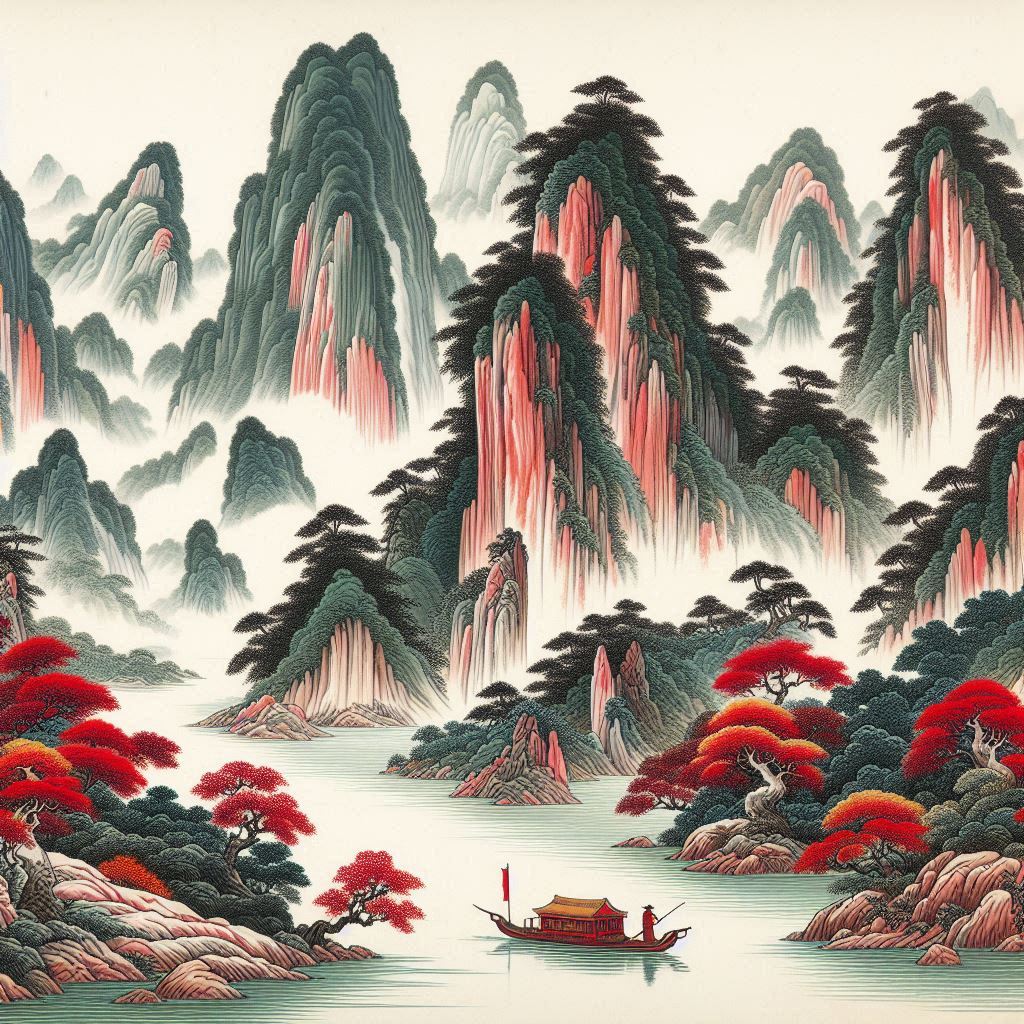Introduction to the disharmony
Major symptoms:
- numbness of the joints or muscles
- pain in the joints or muscles
- swelling of the joints or muscles
- wind-predominant - moving pain from one joint to another
- cold-predominant - sever localized joint pain
- damp-predominant - lasting, fixed, heavy joint pain; swelling and numbness
- heat predominant - pain, redness, swelling and feeling of heat in the joints
Wind, damp and cold are three of six external climatic factors that invade our body and affect our health (the other three are heat, summerheat, and dryness). Under normal conditions the climatic factors do not cause disease and are known as nature’s “six types of Qi”(1). They are natural manifestations of the different seasons and nature’s varying climate. Only when these climatic factors become sudden, extreme or when the body’s immune system is weak, they become pathological for human health, and are then referred to as "the six evils”.
When wind, cold and dampness invade the body they obstruct the channels and interfere with the blood and Qi circulation. Whenever there is lack of circulation there is blockage; whenever there is blockage – there is pain.
Wind has highly penetrating quality. Wind is also an evil that combines with other evils(2). It acts like a courier conducting other evils (such as damp and cold) to enter the body.
Wind-damp-cold invasion causes painful obstruction which manifests predominantly in the joints and muscles with symptoms such as numbness, pain or swelling. There are four main types of painful obstruction:
Wind-predominant, characterized by moving pain from one joint to another (one of wind’s qualities is to constatnly move)(3).
Cold-predominant, characterized with sever localized joint pain (cold has the quality to constrict; constriction causes severe pain). The pain is aggravated by exposure to cold and lack of motion(3).
Damp-predominant, characterized with lasting fixed heavy pain, swelling and numbness (damp has the quality to be heavy, linger, expand and obstruct). The pain is aggravated by exposure to damp environment(3).
Heat-predominant, characterized by pain, redness, swelling and feeling of heat in the joints; the joints also feel hot when touched. This condition originates from the previous three when the “evils” turn into heat(2) – a common transformation of external pathogenic factors.
Most herbs used in traditional Chinese medicine for painful obstruction are warm and drying in nature and address the damp and cold evils. Often the Liver and the Kidney are tonified (the Liver governs the sinews and the Kidneys govern the bones)(3), as well as the Qi and the blood. Yet tonification is best done when there is no external pathogenic invasion (no symptoms of painful obstruction) as the tonifying herbs may also tonify the “evils”.
Major Chinese herbs

Two powerful remedies used in traditional Chinese medicine to unblock the channels and expel wind-damp painful obstruction are “white patterned snake” – Bai Hua She (Agkistrodon acutus) and “black striped snake” – Wu Shao She (Zaocys dhumnades). They both dispel wind from the skin and dispel wind from the sinews. Snake skin slough – She Tui (Elaphe taeniurus) benefits skin lesions but also removes visual obstruction like disorders of the cornea(3).
A common herb to treat wind-cold-damp obstruction is Du Huo (Angelica pubescens) which especially benefits the lower back and legs. Qin Jiao (Gentiana macrophylla) benefits the extremities and Wei Ling Xian (Clematis chinesis) benefits pain and rheumatism(3)(4). Wu Jia Pi (Acanthopanax gracilistylus) is an herb suitable for elderly people and children with undeveloped motor function(3). This herb is known to be acknowledged by one of the most respectful herbalists in China Shih Chen Li. According to his story half a dozen Chinese politicians and scholars prior to his time lived over 300 years as a result of consuming Wu Jia Pi soaked in rice wine(4).
Healing foods
As the root of painful obstruction is not one but three pathogenic factors (wind, cold, damp), and one additional, which originates from the previous three (heat), the foods that address painful obstruction should be a combination of either “warm” or “cold” foods (depending on whether the painful obstruction is “hot” or “cold” type), foods that expel wind, and foods that drain dampness.
To unlock the rest of this article select "Yes, I want to learn!" below.

Food therapy is the most economical and non-toxic biochemical approach to health and disease. Food is something we continuously use to sustain our lives. Learning what foods are healing (and what disruptive) for each condition has the potential to convert every meal into a form of therapy.
YS
(1) Deng Liangye, Gan Yijun, He Shuhui, Ji Xiaoping, Li Yang, Wang Rufen, Wang Wenjing, Wang Xuetai, Xu Hengze, Xue Xuiling, Yuan Jiuling (1987). Chinese Acupuncture and Moxibustion. China: Foreign Languages Press
(2) Maciocia, Giovanni (1989). The Foundations of Chinese Medicine. Nanjing: Harcourt Publishers Limited
(3) Benski, Dan & Gamble, Andrew (1993). Materia Medica, Revised Edition. Seatle: Eastland Press, Incorporated
(4) Lu, Henry (2005). Chinese Natural Cures. New York: Black Dog & Leventhal Publishers, Inc.
(5) Pitchford, Paul (2002). Healing with Whole Foods. Berkeley: North Atlantic Books
(6) Holmes, Peter (1998). The Energetics of Western Herbs. Boulder: Snow Lotus Press, Inc.
Related Articles:
Herb That Clear Heat and Dry Dampness
How The Climatic Factor Damp Affects Health
Dampness in the Urinary Bladder
Damp-Heat in the Large Intestine
Late Summer (Element Earth) - damp evil - diarrhea, colic, vomiting
Note: This site and its services are to consumer educational use only. Nothing contained in this site is or should be considered, or used as a substitute for medical advice, diagnosis or treatment. We advise users to always seek the advice of a physician or other qualified professional with any questions regarding personal health and medical condition. Please read our Disclaimer









